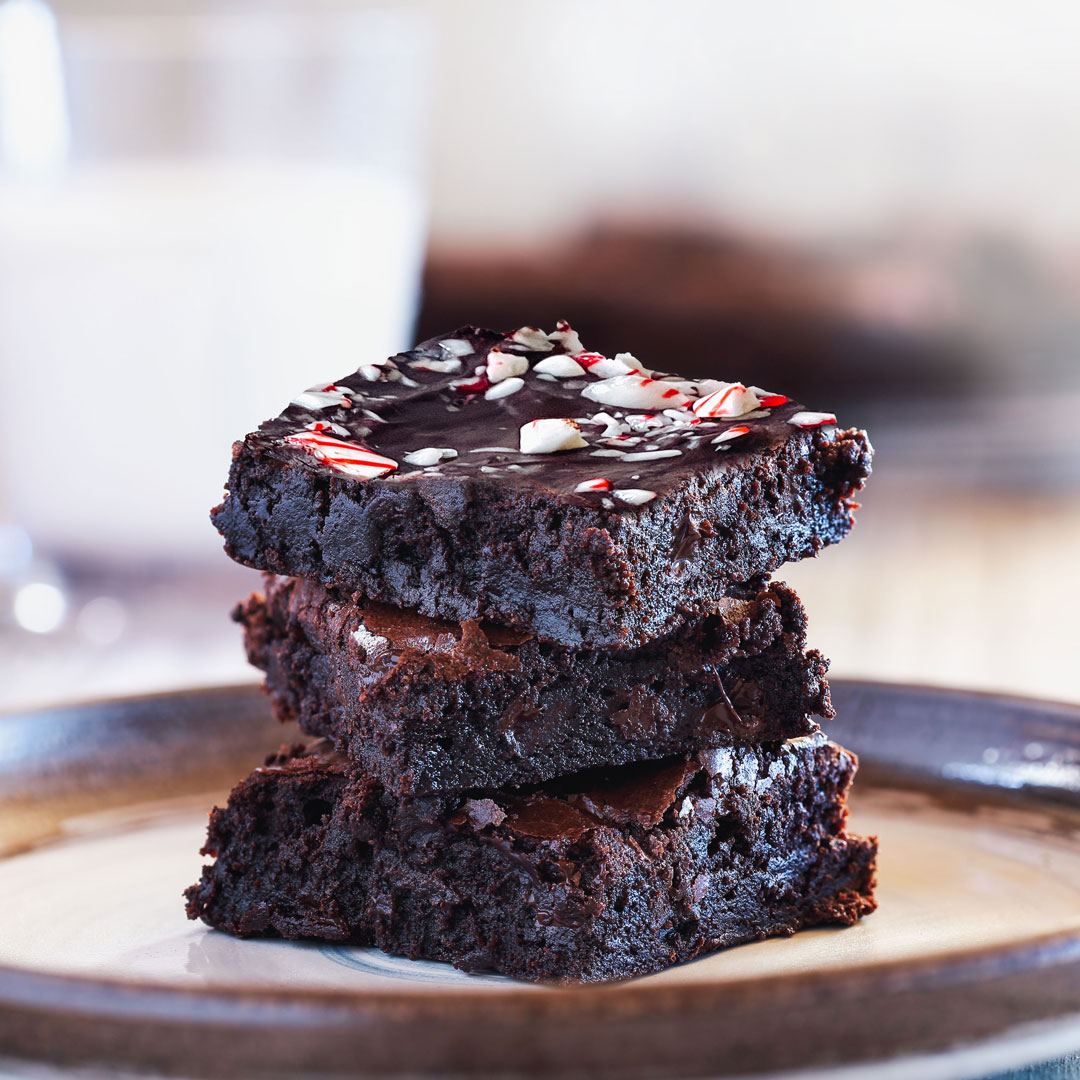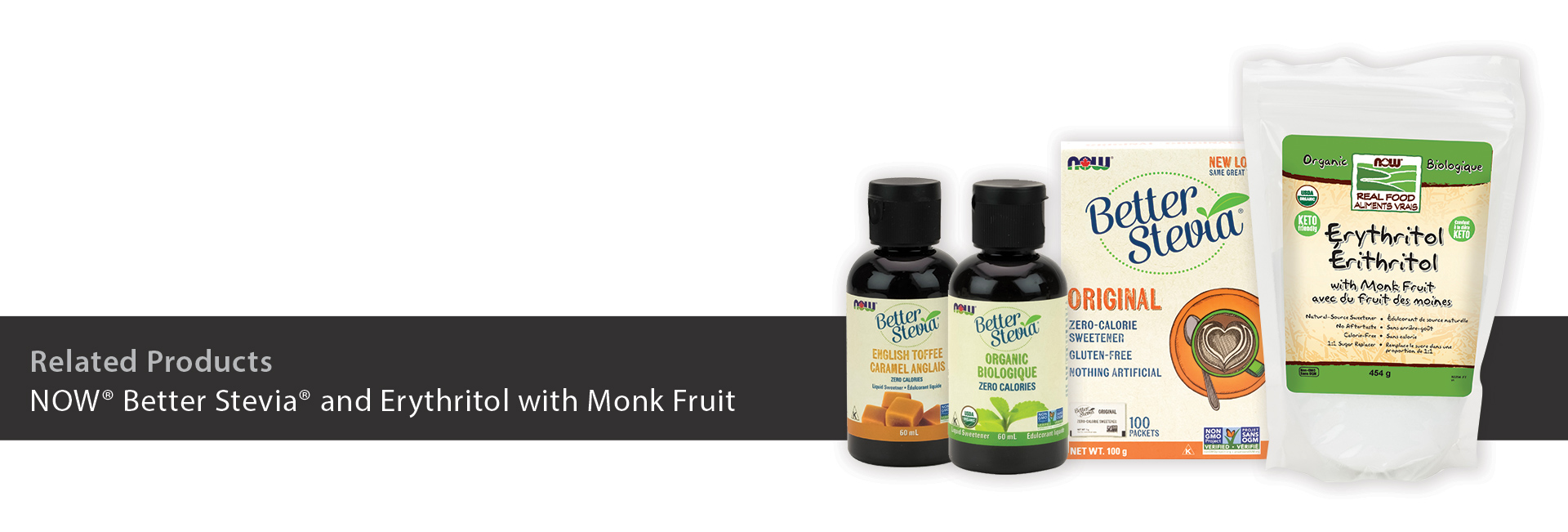How to Enjoy Natural Sweeteners
Three things about sugar are indisputable: we love it, we eat too much of it, and we get sick because of it. While humans had have enjoyed sugar since its domestication about 10,000 years ago, our addictions have been fueled dramatically by easy access, frequent temptation, and misinformation. Sugar is, at the very least, an omnipresent accomplice in the explosion of obesity, diabetes, heart disease, fatty liver, and other chronic diseases. Sugar stimulates pleasure centers in our brain that hook us into a pattern of craving and withdrawal. The food industry knows this and uses a scientifically established “bliss point” to calculate just how much sugar we will respond to best.
Experience tells us that many people grossly underestimate their daily consumption of sugar. According to recent statistics, the average total sugar intake (TSI) of Canadians accounts for 21.4% of their daily calories. The World Health Organization (WHO) recommends a sugar TSI of less than 10% and ideally 5%. This means most of us are consuming four times the ideal according to the WHO. To calculate your sugar intake for a couple of days divide the GRAM amounts on your nutrition facts label by FOUR and convert to teaspoons. For example, twenty grams of sugar equals five teaspoons of sugar per serving size. Note that the gram amount is per single serving size. If you are eating two serving sizes, then you would need to multiply your teaspoons of sugar by two. Health Canada has updated its labels to include a daily value (DV) of 100 grams or 25 teaspoons. Think of this as the daily maximum. This has been criticized as being both too high and not distinguishing between naturally occurring and added sugars.
We all want to have our cake and eat it too. Fortunately, there are many new low and zero-calorie sweeteners on the market that we can use as sugar substitutes. These provide excellent alternatives to artificial sweeteners that raise some concerns. The Centre for Science in the Public Interest (CSPI) provides an evidence-based list of artificial sweeteners they feel are not proven safe for consumers. It can be found here: https://cspinet.org/eating-healthy/chemical-cuisine. Let’s learn about four natural sweeteners that can safely satisfy our sweet tooth without the caloric impact of sugar. The glycemic index (GI) is its relative impact on blood sugar. The lower the number the better. All sugars below are safe for teeth (non-cariogenic).
1. STEVIA
About: Stevia is an herb that has been enjoyed as a sweetener by natives in South America for hundreds of years. One drawback of Stevia has always been its bitter aftertaste. NOW® Foods has engineered BetterStevia® with an improved taste profile.
Sweetness versus table sugar: Sweetness varies by brand and product. NOW® BetterStevia® is thirty to ninety-six percent sweeter depending on the product. See equivalencies here: https://www.nowfoods.ca/now/nowledge/betterstevia-sweetener-equivalency.
Calories per teaspoon: Zero
Glycemic Index: Zero
Tips for use: Since stevia has no BULKING ability, it is best used to sweeten hot and cold beverages. Remember that a little goes a long way!
2. ERYTHRITOL
About: This alcohol-sugar comes in a fine powder extracted from Non-GMO corn.
Sweetness versus table sugar: 75% as sweet as table sugar.
Calories per teaspoon: 0.8
Glycemic Index: zero
Tips for use: Erythritol is an excellent sugar replacement for cooking, baking and beverages. Replace one teaspoon of sugar with one and one-third teaspoons of erythritol.
3. XYLITOL
About: This low-calorie sweetener comes from the fermentation of other natural sugars.
Sweetness versus table sugar: Equal to sugar (one-to-one replacement)
Calories per teaspoon: Ten
Glycemic Index: Seven
Tips for use: Tastes like sugar with a slight “cooling” sensation in the mouth. Can be used for cooking, baking and beverages.
Notable: Toxic to dogs and ferrets. May cause digestive upset in large amounts. This effect is dose-dependent and individual. Tolerance can build with continued use.
4. MONK FRUIT
About: This is an extract from the Lo Han fruit native to Asia. It has been used for thousands of years as a sweetener.
Sweetness versus table sugar: It is 150-400 times sweeter than sugar, depending on product and brand.
Calories per teaspoon: Zero
Glycemic Index: Zero
Tips for use: Great for hot and cold beverages. It can be used for baking if mixed with another sweetener with more bulking properties such as xylitol or erythritol.
PEPPERMINT BROWNIES
These peppermint brownies are sure to become a staple in your holiday baking arsenal. They’re made with organic monk fruit in lieu of sugar, and other simple ingredients like almond butter and flour, but they taste just as indulgent as any other brownie!

Ingredients:
1 cup runny cashew butter
¾ cup Now® Monk Fruit with Erythritol
¼ cup + 1 tablespoon non-dairy milk
3 tablespoons favorite cooking oil
2 eggs (Sub.flax eggs to make vegan)
1 teaspoon vanilla
1 teaspoon peppermint extract
½ cup Cocoa Powder, Organic
¾ cup Almond Flour, Raw
1 teaspoon baking powder
½ teaspoon salt
2 crushed candy canes
Directions:
- Preheat the oven to 350 degrees. Line an 8×8 baking tray with two pieces of parchment paper so they each hang over opposite ends.
- Whisk together the eggs, cashew butter, NOW® Monk Fruit with Erythritol, oil, vanilla and peppermint extract.
- Add in all remaining ingredients, making sure to spoon and level the flour and cocoa powder, don’t pack them into the measuring cups.
- The batter will be thick, but mix with a wooden spoon until well combined.
- Transfer to the prepared pan and smooth out the top.
- Sprinkle with half of the crushed candy canes, reserve the rest for later.
- Bake for 28-35 minutes or until a toothpick comes out clean.
- Remove from the oven and let cool. Top with the remaining candy canes, slice into 16 squares & enjoy!
Servings: 16 pieces
References:
Statistics Canada: https://www150.statcan.gc.ca/n1/en/pub/82-003-x/2020010/article/00002-eng.pdf?st=-vJ7q1xT
Stevia Equivalency Chart: https://www.nowfoods.ca/now/nowledge/betterstevia-sweetener-equivalency
Sweeteners Equivalency Chart: https://www.nowfoods.ca/file/nowsweetenerequivalencyusagechartpdf
Book: Charney, T. (2016). The Confident Food Shopper: The Guide to Food Labels and Fables (First ed.). The Classroom Doc.
